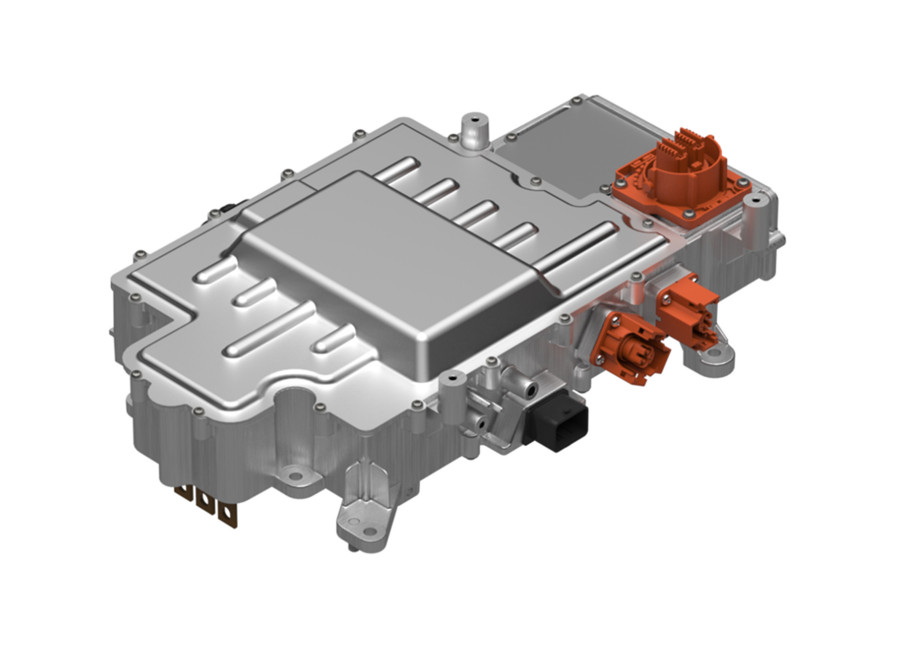BorgWarner’s SiC Inverter for Better Efficiency

The auto industry is undergoing a revolution with the accelerated push to provide new means of mobility that are cleaner, safer, connected and autonomous. A critical enabler to delivering these advances is power. On-board power – and more of it – is needed to meet consumer demands for performance, reliability, comfort and convenience. It’s also the lynchpin for autonomous vehicles, given the increased power required for sensors and computing platforms. Much like today’s smart devices, consumers expect speed – quick to start; quick to perform; quick to recharge – when considering making the switch to alternative vehicles. They want to go farther, with no conditions or constraints.
Why do better inverters matter?
Inverters are critical for electrified propulsions systems. Batteries provide power via direct current (DC), while the vehicle’s high-power motors run on alternating current (AC). It’s the inverter’s job to convert the DC energy stored in the battery to AC. The inverter also acts as a generator. It transforms the AC energy recuperated from the electric motor during braking back into DC energy, which is then fed to the battery for later use. Since all the current running between the battery and the motor goes through the inverter, high efficiencies are a crucial requirement.
Why silicon carbide?
BorgWarner’s silicon carbide (SiC) inverter was created using its proven, double-side-cooled Viper power switch packaging. Because the Viper power switch package works with both silicon and silicon carbide, the change is fairly transparent at the inverter level. We migrate the base Si (silicon) isolated gate bipolar transistor (IGBT) power switches to SiC metal oxide semiconductor field effect transistor (MOSFET) switches in the same Viper power switch package. MOSFET transistors are similar to IGBTs but offer better efficiency in this case.
The main benefit of SiC power switches is improved efficiency of the inverter. This improved efficiency comes from lower losses in the SiC power MOSFET’s, which means less battery pack energy is lost to heat. In comparable tests we have conducted, a SiC inverter has up to 70% lower losses under typical vehicle driving conditions. Silicon carbide’s efficiency advantage over silicon IGBT’s is at both 400V and 800V, but the relative advantage is higher at 800V. With less heat being dissipated by the switches at a given current level, the overall power throughput of the inverter can be increased while keeping thermal loads manageable.
As such, SiC can be an enabler for higher power levels, and as an enabler for better 800V systems it supports a higher voltage architecture that can permit faster charging. While SiC power devices are more expensive than their silicon IGBT counterparts, even after accounting for higher power densities that are possible at the device level, the energy savings at a battery pack level can provide an overall value equation that is attractive to OEMs.
Benefits of BorgWarner’s SiC inverter
A vehicle OEM can decide to leverage this improved efficiency either by achieving higher range with the same size battery pack, or by reducing the capacity and cost of the battery pack at the same range. Because silicon carbide also enables higher overall power levels, there is also the potential for a vehicle performance improvement. This gives automakers a way to present consumers with a range of performance options, including the ability to trade off battery size and cost versus vehicle range, at multiple price points, which is similar to the way powertrains are marketed today.
Future Outlook
We expect to see SiC inverters more broadly in the market, both at 400V and 800V. Device- level improvements will bring additional increases in efficiency and the potential to improve costs relative to silicon. Some OEMs may choose to leverage the power density of SiC to offer high performance vehicles with this highly efficient technology. This is an exciting time for vehicle electrification, and silicon carbide-based inverters are one key piece of that picture!

A requerimiento de AutoRevista sobre la imposición de aranceles del 30% a vehículos y componentes de la Unión Europea por parte de la Administración Trump, desde CLEPA señalan que "instamos encarecidamente a la UE a que impulse una exención para las piezas de automóviles en cualquier acuerdo.

La Asociación Española de Renting de Vehículos acaba de presentar su informe anual, y con él cifras más que optimistas para el segmento. Tanto es así que el parque de vehículos en renting ha crecido el 6,11% durante el primer semestre de este 2025 (una cifra levemente superior a la prevista por la asociación, el 6%), lo que implica que este asciende a 984.354 unidades totales.

Nissan ha construido un nuevo centro de reacondicionamiento de vehículos en la Planta de Nissan Ávila, diseñado para ofrecer a los clientes la experiencia de reestrenar un coche, gracias a un proceso altamente especializado y con los estándares de calidad Nissan.

PowerCo Battery Spain (PowerCo) y el ITE (Centro Tecnológico de la Energía) han establecido un acuerdo de colaboración con el objetivo de incrementar las capacidades formativas sobre esta industria pionera en España.

La filial española de Dacia ha designado a un nuevo Comité de Dirección con el propósito de continuar creciendo en 2025, después de lograr los mejores resultados de su historia en el primer semestre del año con un 9,6% de la cuota del mercado a particulares.
